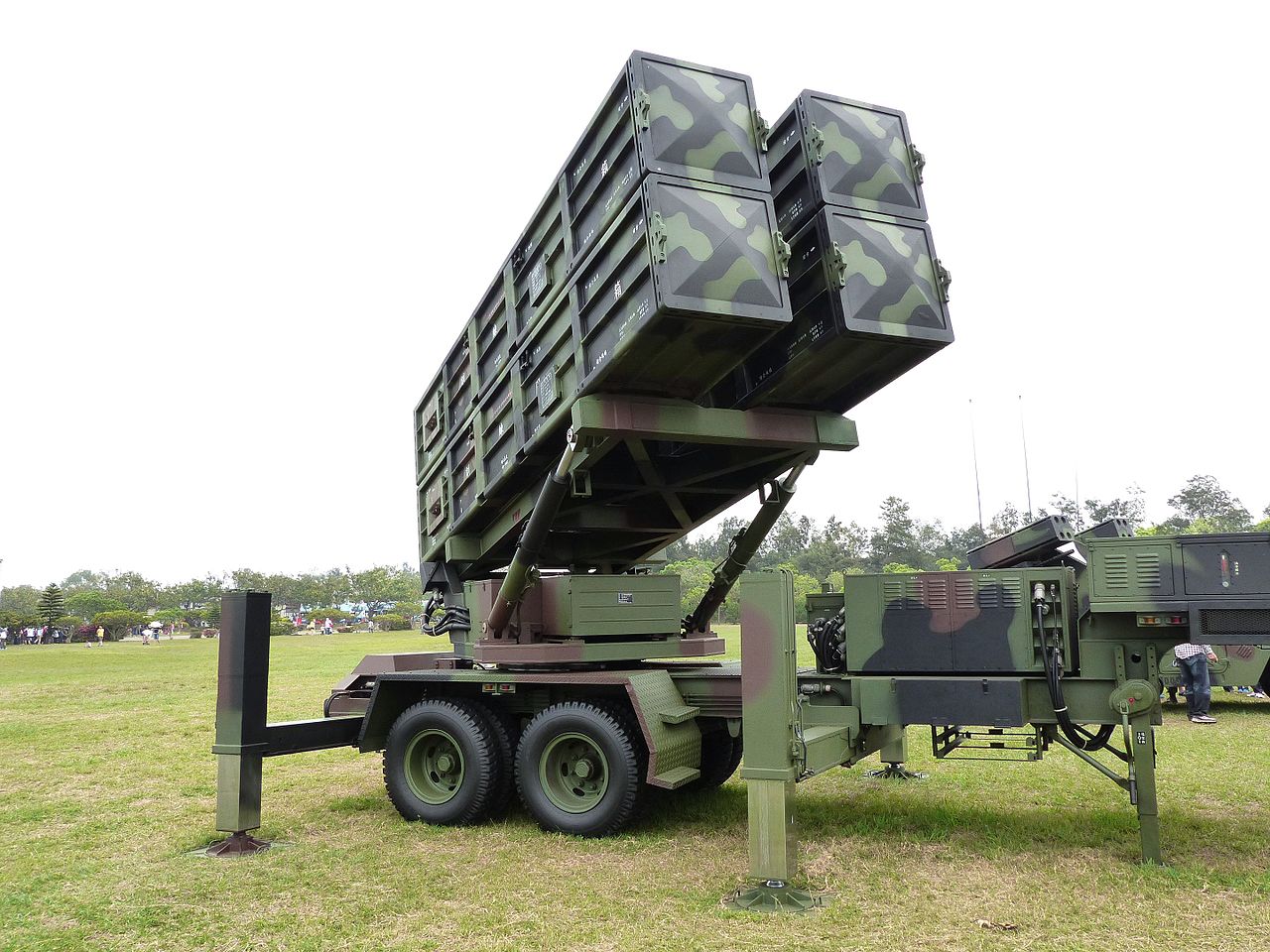Taiwan has commenced the production of the TC-2 air defense system in full swing, following comprehensive tests by the developer, i.e., the National Chung-Shan Institute of Science and Technology (NCSIST).
The Republic of China (RoC) military had previously rejected the missile owing to what local media reports suggested were incomplete tests that did not demonstrate the whole system.
The TC-2 uses the Sky Sword II missile and is a part of Taiwan’s effort to have a “layered” air defense, engaging progressively larger and overlapping aerial zones from the People’s Liberation Army’s (PLA) aircraft, drones and cruise missiles.
Previously, Taiwan has produced units of another advanced surface-to-air missile (SAM), the Tien Kung-III (TK-III) or Sky Bow-3, to replace the older US-made MIM-23 Hawk and TK-II platforms.
Layered Defense From Chinese Missiles
According to a report in Taiwan News, the system first underwent a series of tests in March to evaluate its performance but failed to meet the Army’s requirements. It cleared a second round of evaluations in July, following which the Ministry of Defense (MND) agreed to large-scale production.
The NCSIST did not conduct a “full-system functional joint test,” and the project was judged “unsatisfactory” by the Army. The developer then agreed to “a full-system joint test procedure” in July. “The land-launched missile system is now fully engaged in mass production,” the report added.

The Army plans to purchase 30 mobile missile launchers, six combat control centers, six phased-array radar systems, and 246 Sky Sword II air defense missiles for NT$8.8 billion (US$278 million).
The Sky Sword II can reach up to 15 kilometers and will be deployed alongside the US-made Avenger missile system. One system can fire between 16 and 20 Sky Sword II missiles. “The operational deployment is intended to fill Taiwan’s air defense gaps, achieving a ‘heavily layered interception’ effect in a ‘hybrid configuration.'” This puts the Sky Sword-II/TC-2 in the short-medium range category, ahead of the Very Short-Range Air Defense (VSHORAD) Avenger system.
A complete “field air defense weapon system” comprises a Bee Eye phase radar vehicle, a command and control vehicle, a land-launched Jian-II missile launcher, and an ammunition carrier.
What Was The Testing Deficiency?
Liberty Times quoted a leaked government Audit Department report that found “only a single engagement control vehicle and a launch vehicle were tested for communication and reception.” But a “Full System Functional Joint Test,” based on operational needs and “meet the Army’s standards,” was not conducted.
From its end, the Chinese Academy of Sciences (CAS) reasoned that the military “did not explicitly request this test item to the original equipment acceptance test procedure.”
The Liberty Times report keeps referring to the developer as the Chinese Academy of Sciences, while an internet search reveals the missile system’s inventor is the NCSIST. Therefore, it is unclear if the actual developer is another entity called the Chinese Academy of Sciences [CAS] or if CAS is an alternative unofficial name for the NCSIST).
In March 2012, owing to the shortcomings and skipping of testing standards, the Army discovered an “abnormality” in the launch vehicle, phased radar vehicle, and engagement control unit during a “Full System Configuration.”
The test was judged “unsatisfactory” and returned to the Chinese Academy of Sciences for correction within a time limit. As a result, the delivery schedule was delayed.
Adding Sky Bow III (TK III) To The Inventory
Taiwan will also build 12 new indigenous Tien-Kung or Sky Bow III (TK III) land-based surface-to-air missile sites by the end of 2026 to counter the threat of China’s ballistic missiles, Focus Taiwan reported in October.
NCSIST has found that older generations of TK missiles it built, the TK IIs, could no longer counter the threat of the People’s Liberation Army’s advanced ballistic missile systems and needed to be modernized.
Consequently, the MND decided to upgrade its existing MIM-23 Hawk missile system sites and TK II missile sites and turn them into 12 new missile sites for the more advanced TK III SAMs. It did not disclose how many existing TK III sites Taiwan already has.
Taipei’s Defense Production Push
Taiwan has been trying to match China’s defense preparations in anticipation of a military conflict over political control of the island. Taiwan is up-gunning its military with a slew of military purchases from the US, consistently holding a series of air-naval-ground drills over the last year, and upgrading its defense technology research and production, introducing a series of drones and missiles to counter China’s vast arsenal.
The Taiwan Straits have seen the most severe tensions in decades since the August 2022 visit of former US Speaker Nancy Pelosi to Taiwan.
The People’s Republic of China (PRC) retaliated by holding unprecedented live-fire drills at six different spots around the island, firing missiles over the island for the first time that landed on its eastern seaboard, and continuing to hold naval drills with its aircraft carrier battle groups off Taiwan’s eastern and southeastern seas.
- The author can be reached at satamp@gmail.com
- Follow EurAsian Times on Google News




